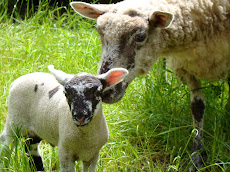
We have three bird houses on the deck. Last year each had birds - black capped chickadees and swallows. This year two of the houses are occupied with birds, but the one on the end isn't. Bumble bees have taken up residence there.
Bumble bees create nests in abandoned homes of rodents or birds, anything with good nesting materials. The queen goes in and lays a bunch of eggs. She makes them all girls. (It just amazes me that bees choose the sex of their offspring.) As soon as they hatch their only job is to go gather food. The queen keeps laying eggs. This goes on for a month or so, depending on the variety - there are about 45 varieties of bumble bees in our area. Then the bees make a new queen and she goes to hibernate somewhere - all the rest die. They don't come back to that nest; the new queen will pick a new place next spring.
Where did all this bee knowledge come from you ask? I spent Friday at a Pollinator Workshop put on by the Xerces Society and sponsored by the Oregon Zoo. It was one of the best workshops I've attended and it included a tour of four bee spots at the zoo.
Bees are really amazing! The agricultural industry depends on bees - 1 in 3 bites of food you eat was pollinated by a bee. Even meat - the cow was raised on a pasture (hopefully) and the pasture was pollinated by bees (and butterflies). Most of this pollination on big farms is done by the European honey bee, which is the type of bee we just added to our farm. However, in our area there are also over 150 varieties of native bees and they do a fare share of the work. People smarter than me did an economic study and $3 billion a year in ag produce in the US can be traced back to native bees.
The native bees we have had on our farm for a few years now are Mason bees (aka Orchard bees). The are solitary bees that live in tunnels. The are the earliest bees to emerge and come out right when the apples, plums, pears, peaches are in bloom. Now in mid-May they are laying eggs - 6 or more per tunnel. They'll cap the tunnel with mud and that's it until next March.
70% of native bees are solitary nesters. And solitary nesters are the most gentle of all bees. Their sole purpose in life is to lay a bunch of eggs and they are so focused on that, they don't care about anything else. Plus they don't want to get into a scruff because if they die that's it. Pacifists. I say this because bees have gotten a bad rap. So many people I know are scared of bees and can't understand why we have been adding more and more on the farm.
I think most of the bad rap is because of wasps. It is likely that anyone who has been stung was stung by a yellow jacket or another type of wasp, not a bee. Wasps are carnivores - they don't pollinate. Don't get me wrong, wasps play an important role in nature. I love watching yellow jackets come get bits of meat off my plate at the end of a summer BBQ. But they are more aggressive. I've been stung twice in my life and both times it was by yellow jackets. One time I was working at a lake and gathering up the garbage bags, which were buzzing with yellow jackets. I brushed one away and it stung me. The other time, we were hiking and I stepped on a nest (they are ground nesters). That pissed them off and I got stung. But I've never been stung by a bee. Now that we have a honey bee hive I expect that will change. It's impossible to work with the frames and honey supers and not get stung every once in a while.
I can see the bees hard at work out the window. It is sunny and warm. Lots of things are in bloom. And the bees are buzzing!













No comments:
Post a Comment